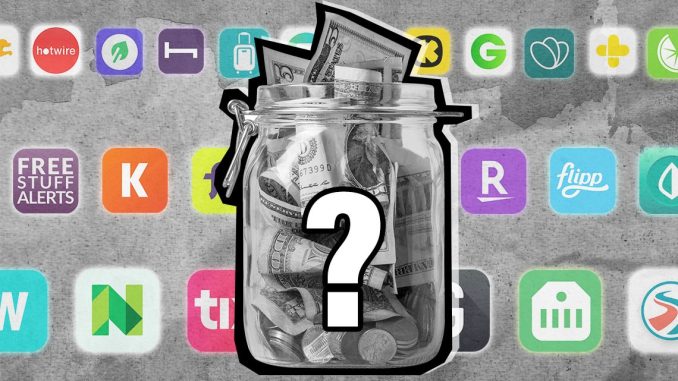
Free apps have become a staple of modern digital life, offering convenience, entertainment, and utility at no apparent cost. From social media platforms and mobile games to productivity tools and fitness trackers, the app ecosystem thrives on the promise of accessibility without a price tag. But beneath the surface, these free offerings often come with hidden costs that users may not fully recognize. While they don’t require payment upfront, they frequently monetize through data collection, advertising, in-app purchases, and other mechanisms that can affect privacy, performance, and even financial well-being over time.
One of the most significant hidden costs of free apps is the exchange of personal data. Many apps collect extensive information about users, including location, browsing habits, contacts, and device usage. This data is often used to build detailed profiles that can be sold to third parties or used to target advertising with remarkable precision. While some users may accept this trade-off as part of the digital experience, the implications are far-reaching. Data breaches, identity theft, and the erosion of privacy are real risks, especially when users are unaware of how their information is being used or shared. The lack of transparency in data practices means that the true cost of using a free app may only become apparent after a security incident or unwanted exposure.
Advertising is another way free apps generate revenue, and while it may seem harmless, it can degrade the user experience and introduce subtle costs. Intrusive ads can slow down performance, consume data bandwidth, and distract from the app’s intended function. In some cases, ads may promote questionable products or services, leading users to make purchases they later regret. More concerning is the rise of ad fraud and malicious advertising, where deceptive content can lead to malware infections or phishing attacks. The presence of ads in free apps is not just an annoyance—it’s a potential vector for risk and a reminder that the app’s primary customer may be the advertiser, not the user.
In-app purchases represent another layer of hidden cost. Many free apps operate on a freemium model, offering basic functionality for free while charging for premium features, virtual goods, or enhanced experiences. While this model can be fair and sustainable, it often relies on psychological triggers to encourage spending. Limited-time offers, gamified rewards, and social pressure can lead users to spend more than they intended, especially in gaming or lifestyle apps. For parents, this can be particularly problematic when children make purchases without understanding the financial impact. The cumulative effect of small transactions can add up quickly, turning a free app into a costly habit.
Performance and device impact are also worth considering. Free apps may include background processes that drain battery life, consume memory, or slow down system performance. Some apps run persistent services or collect data continuously, affecting not just the device but also the user’s productivity and satisfaction. In extreme cases, poorly optimized apps can cause crashes or interfere with other functions, leading to frustration and lost time. These technical costs are rarely disclosed and often overlooked, but they contribute to the overall burden of using free software.
Security vulnerabilities are another hidden concern. Free apps may lack the resources or incentives to maintain rigorous security standards, leaving users exposed to threats. Updates may be infrequent, and support may be limited, especially for lesser-known or independently developed apps. When vulnerabilities are discovered, users may not be notified promptly, and patches may be delayed. This creates a window of risk that can be exploited by cybercriminals. Trusting a free app with sensitive information—such as passwords, financial data, or personal communications—requires confidence in its security posture, which is not always justified.
The broader economic implications of free apps also deserve attention. By offering services at no cost, free apps can disrupt traditional business models and create pressure on competitors to follow suit. While this can drive innovation, it can also lead to a race to the bottom, where quality and sustainability are sacrificed for scale and market share. Developers may struggle to monetize their work, leading to reduced investment in support, updates, and user experience. In the long run, this can erode the value of digital ecosystems and limit consumer choice. Free apps may appear to democratize access, but they can also distort markets and undermine long-term viability.
Ethical considerations further complicate the picture. When users are not the paying customers, their interests may not be prioritized. Design choices may be driven by engagement metrics rather than user well-being, leading to addictive behaviors, manipulation, or exploitation. Social media apps, for example, often optimize for time spent rather than meaningful interaction, contributing to mental health concerns and societal polarization. The hidden cost here is not financial—it’s psychological and cultural. Understanding the incentives behind free apps helps users make more informed choices and advocate for responsible design.
Ultimately, the allure of free apps is understandable. They offer immediate value, reduce barriers to entry, and support a wide range of needs. But the hidden costs—whether in data, dollars, performance, or ethics—are real and worth considering. Users should approach free apps with a critical eye, reviewing permissions, understanding monetization models, and evaluating the trade-offs involved. Businesses and developers, meanwhile, have a responsibility to be transparent and accountable, ensuring that free does not mean exploitative. In a digital world where convenience often masks complexity, awareness is the first step toward smarter, safer, and more sustainable choices.